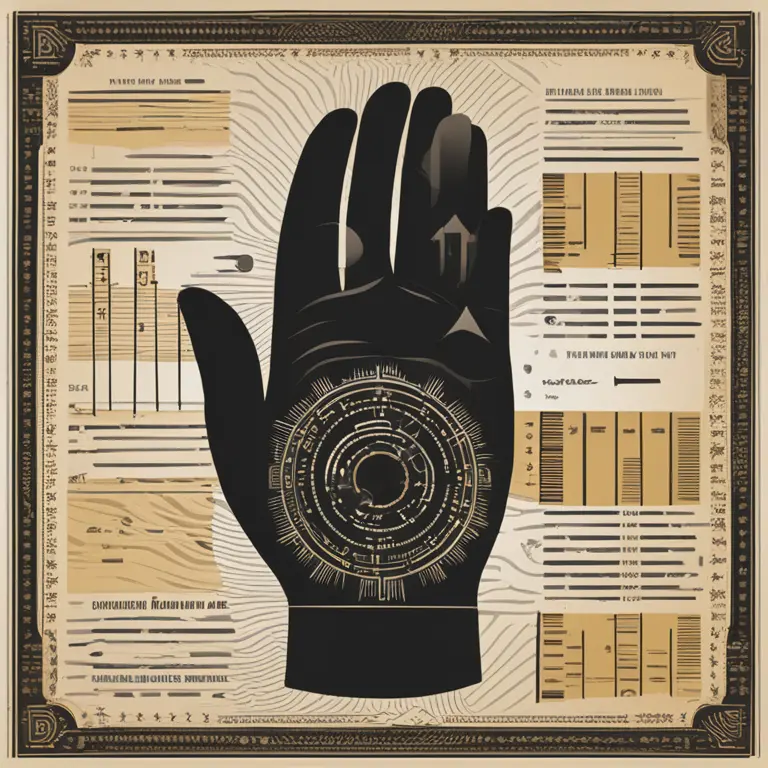
The Reliability of Palmistry: A Modern Perspective
Examine the reliability of palmistry as a practice of character analysis and prediction through contemporary lenses in this in-depth article.
article by Nora Pennington
Palmistry: An Ancient Practice
Palmistry, also known as chiromancy, has been a topic of human curiosity and skepticism for centuries. This ancient practice, originating across different cultures, claims to reveal a person’s traits, future prospects, and life events through the analysis of the palms. Despite its historical significance and widespread cultural presence, the debate on its accuracy persists. Modern interpretations tend to blend traditional methods with psychological analysis, aiming to offer more nuanced readings than simple fortune telling. How then, in a world driven by science and evidence, does palmistry stand up to scrutiny?

Scientific Scrutiny and Palmistry
The scientific community typically regards palmistry as a pseudoscience due to a lack of empirical evidence supporting its predictive capabilities. Critics point out that the practice lacks consistency, is prone to subjective interpretation, and often relies on the Forer effect, where individuals give high accuracy ratings to descriptions that are vague and general enough to apply to a wide range of people. However, palmists argue that the true essence of palmistry is not prediction but rather personality assessment, akin in some ways to psychological profiling.

Evolving Techniques for the Modern Reader
Modern palmists often incorporate elements of psychology and counseling into their readings. They may use the lines and features of the hand as a starting point to engage in deeper conversations about an individual’s life experiences and personal growth. This approach positions palmistry more as a tool for reflection and self-improvement rather than deterministic prophecy. It emphasizes the capacity to change and adapt—one's life path is not seen as wholly predestined by the lines on one's palm.

Palmistry and Statistical Correlations
Recent studies have shown some relationships between hand features and certain medical conditions or personality traits, lending credence to parts of palmistry on a very general level. For example, researchers have found correlations between fingerprint patterns and genetic disorders. However, these findings are far from the specific predictions and analyses palmists offer, and they do not validate palmistry as a whole.
Personal Anecdotes vs. Collective Evidence
Supporters of palmistry often cite personal anecdotes and transformative experiences as evidence of its accuracy. While compelling on an individual level, these accounts do not constitute scientific proof. For palmistry to gain broader recognition, it would require large-scale studies that provide consistent, replicable results—something that has not yet come to fruition.
Choosing to Believe in Palmistry
Many people find comfort and insight in palmistry readings, regardless of the scientific standpoint. For them, the accuracy of palmistry is a subjective matter, intertwined with their personal beliefs and experiences. In this view, palmistry's value lies in its ability to provide perspective, foster introspection, and support personal development.
The Future of Palmistry
As we move further into 2024 and beyond, palmistry may continue to evolve. Perhaps it will integrate more with technology, using data analysis to refine its readings, or it might remain a purely humanistic practice that thrives on personal interaction and interpretation. Whether palmistry can withstand the test of time and the demands of empirical validity remains to be seen, yet its capacity to captivate and intrigue will likely endure.
Published: 1/11/2024
Modified: 1/12/2024
More predictions
Come back here soon to learn more about yourself and your future


The Essence of Palmistry: Interpreting Lines and Shapes
Delve into the world of palmistry to discover the meanings behind the lines and shapes etched into the palms of your hands.


The Ancient Art of Vedic Palmistry
Discover the ancient art of Vedic Palmistry and its practice in the modern era, revealing the secrets held within the lines of the hand.


Palmistry Basics: How to Read Your Hand's Secrets
Learn the basics of palmistry with this guide on how to read the lines and shapes of your hands to reveal insights about your personality and future.